AAW Focus on Fundraising in 2023 - 5 Tips to Help You Appoint That Role
Last week Imogen Ward explored some key opportunities for 2023, including those around the recruitment of leadership positions at NFPs. Ali Kurn, AAW Group’s Managing Consultant of Executive Search, picks up the baton and reflects on how organisations can improve their chances of placing key roles in a competitive market by adopting a more focused, human and proactive approach to recruitment.
Continuing on a key message from my colleague Imogen last week, charities really cannot afford to be complacent when carrying out recruitment campaigns this year.
As you probably already know, there is a LOT of competition around for leadership roles, particularly in fundraising. With the longer-term impacts of the pandemic and reduced government funding, charities are under so much pressure now from their Boards to meet bold fundraising targets, create a step-change in income growth and diversify funding. There simply aren’t enough people around with the experience and the confidence to deliver on big ambitions.
So, when you are competing for candidates this year, what should you take into account?
Tip 1. Prioritise the Process. Investing time and preparation in the design of your recruitment campaigns right from the start is crucial. Part of that process is giving yourself time to work out what you really want and need in a role, and positively selling the opportunity whilst also being realistic, open and honest about the opportunities and challenges. Rather than simply replacing like with like, a crucial part of our recruitment process at AAW is to use our charity sector experience and expertise to work with our clients to consult and advise them on what they really need in a position to enhance their success. Sometimes appointing an Interim in post can buy you the breathing space to prepare fully for a transitional permanent appointment.
Tip 2. The Package. Something else you need to agree on before you start, and be crystal clear about in your communications, are your salary parameters, expectations around location and flexibility, and the number of days you want someone to be in the office. Salary is now becoming less of a ‘hygiene factor’ and a significant uplift in pay has risen further up the key criteria for candidates in their job searches. We’ve heard of an increasing number of placements at offer stage going awry due to a lack of communication around these issues, particularly around working hours and office presence. So, just how hybrid is hybrid?
There’s a really interesting balance to be struck between what candidates want in terms of flexibility of hybrid working, and the needs of organisations and their teams. In this post-lockdown world we are seeing a real shift whereby more organisations are seeking Directors in the office much more frequently than in the last 2 years to help bring teams together and increase learning and development.
So, whilst the last few years have led to organisations welcoming a wider pool of talent for roles by enabling people to work remotely and potentially live much further away from the office, the reality of managing teams and ambitious targets may well be leading to a bit of conflict in the face of the rise in cost of living and travelling.
Tip 3. Be Organised. To compete in 2023’s recruitment market you need to set and communicate a recruitment timetable that allows the campaign to be robust but swift enough so that you don’t lose good candidates along the way. You should have interview panels identified, briefed and ready, with their diaries blocked out. You should know the decision makers in the process and ensure they have the authority to make decisions throughout, especially after the final interview. Candidates want decisive organisations that want them – make sure you communicate that!
Tip 4. Be Human: On the subject of communication – poor communication can easily lead to candidates taking opportunities elsewhere, or even dropping out of processes. Organisations that do well understand the time, effort and commitment that candidates put into a recruitment process and show that by providing timely and meaningful feedback – often in a one-to-one phone call. Mutual respect is so important, and many organisations could improve the way they communicate this to their candidates. That includes ensuring that your assessment process reflects the key skills and knowledge you’re trying to ascertain. For example, a presentation should be beneficial for both candidate and organisation, enabling a deeper insight and understanding from both sides.
Tip 5. Go Deeper: We’ve also noticed an increase in the depth of conversations that candidates want about an opportunity and organisation before they decide whether to apply. We spend a great deal of time talking with our candidates, sharing key information from our in-depth briefings with clients on the role, finances, etc and cultivating enthusiasm and excitement. Putting that time and effort in really secures a candidate’s interest throughout the whole process and sets the role apart from others they may be contemplating.
Over the past few months my team and I have successfully placed C-Suite and Leadership roles in organisations such as Oxfam, Barnardo’s, St John Ambulance, Marie Curie, UK Youth and RNID. We have also worked with Higher Education establishments (in the UK and globally), Hospices, Air Ambulance Charities and NHS trusts.
If you need any assistance with designing and conducting a personal, bespoke and effective recruitment process, please contact me at ali@aawpartnership.com I’d be delighted to have a chat about how we can work together in 2023.
